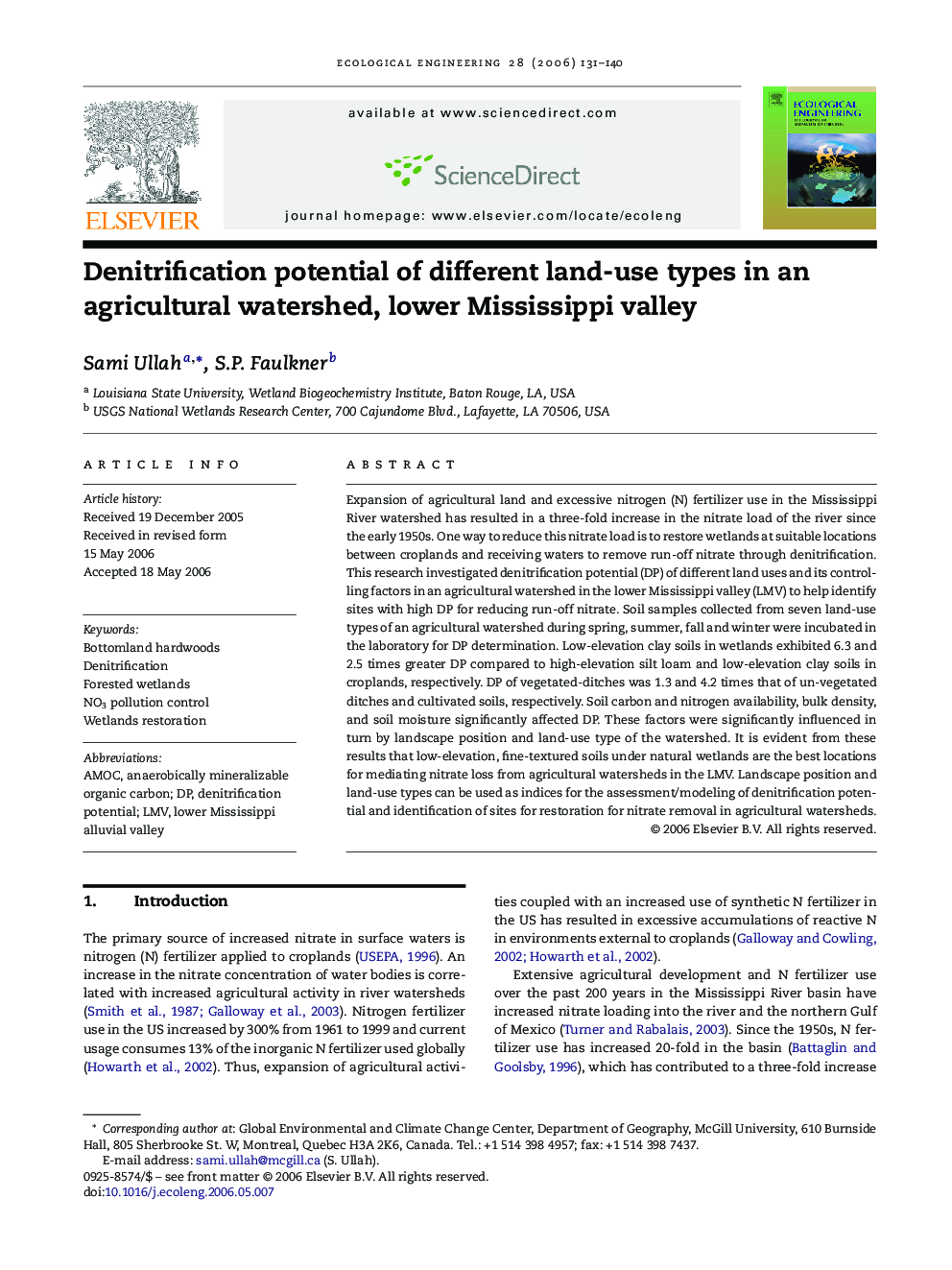| Article ID | Journal | Published Year | Pages | File Type |
|---|---|---|---|---|
| 4391221 | Ecological Engineering | 2006 | 10 Pages |
Expansion of agricultural land and excessive nitrogen (N) fertilizer use in the Mississippi River watershed has resulted in a three-fold increase in the nitrate load of the river since the early 1950s. One way to reduce this nitrate load is to restore wetlands at suitable locations between croplands and receiving waters to remove run-off nitrate through denitrification. This research investigated denitrification potential (DP) of different land uses and its controlling factors in an agricultural watershed in the lower Mississippi valley (LMV) to help identify sites with high DP for reducing run-off nitrate. Soil samples collected from seven land-use types of an agricultural watershed during spring, summer, fall and winter were incubated in the laboratory for DP determination. Low-elevation clay soils in wetlands exhibited 6.3 and 2.5 times greater DP compared to high-elevation silt loam and low-elevation clay soils in croplands, respectively. DP of vegetated-ditches was 1.3 and 4.2 times that of un-vegetated ditches and cultivated soils, respectively. Soil carbon and nitrogen availability, bulk density, and soil moisture significantly affected DP. These factors were significantly influenced in turn by landscape position and land-use type of the watershed. It is evident from these results that low-elevation, fine-textured soils under natural wetlands are the best locations for mediating nitrate loss from agricultural watersheds in the LMV. Landscape position and land-use types can be used as indices for the assessment/modeling of denitrification potential and identification of sites for restoration for nitrate removal in agricultural watersheds.
